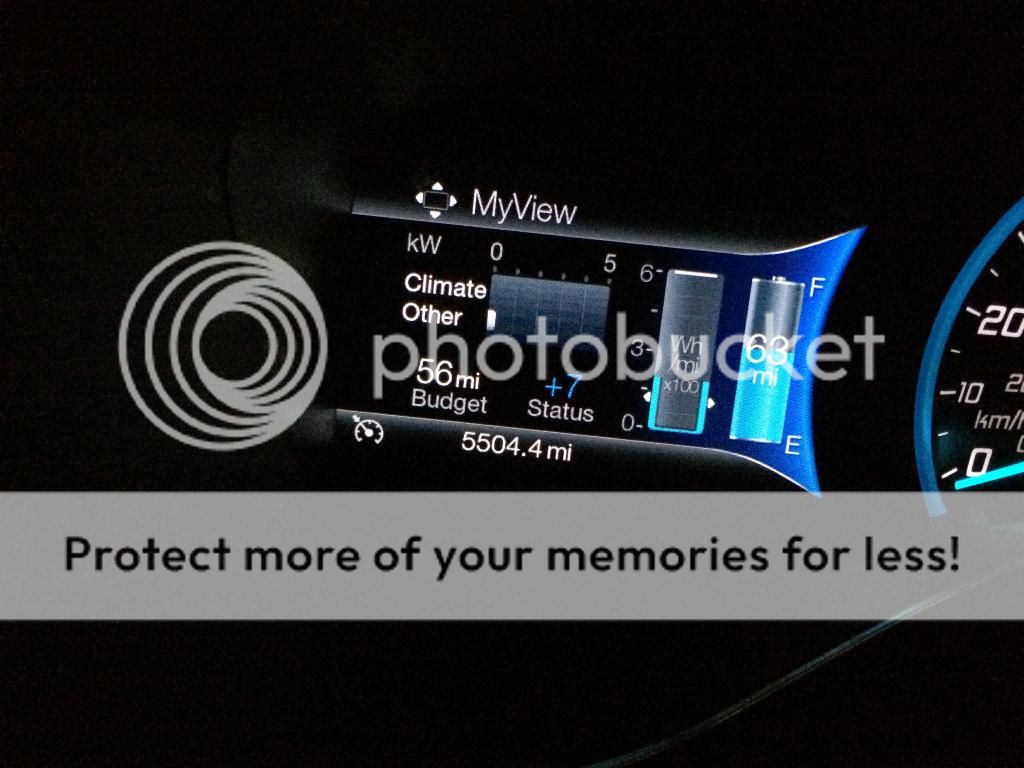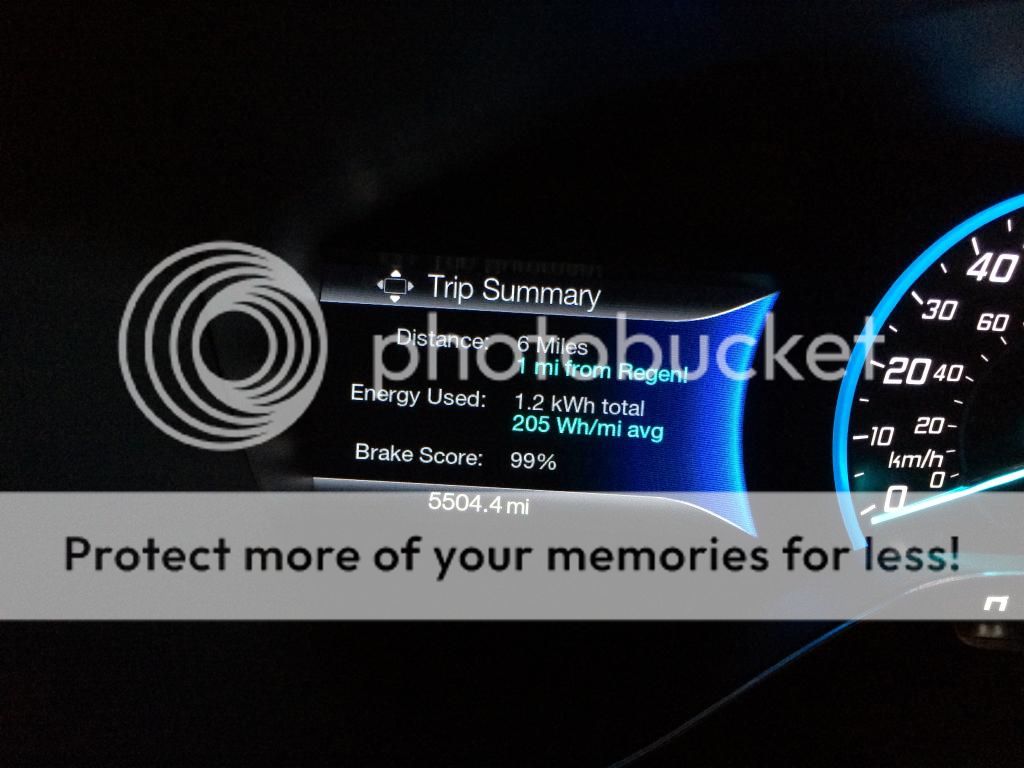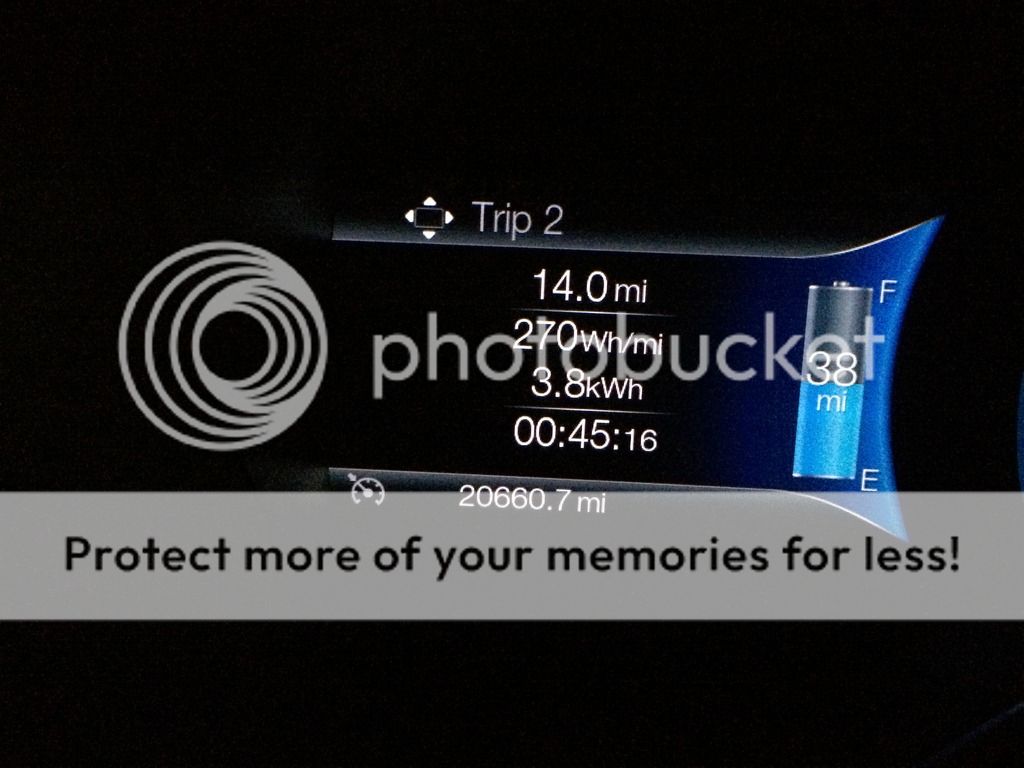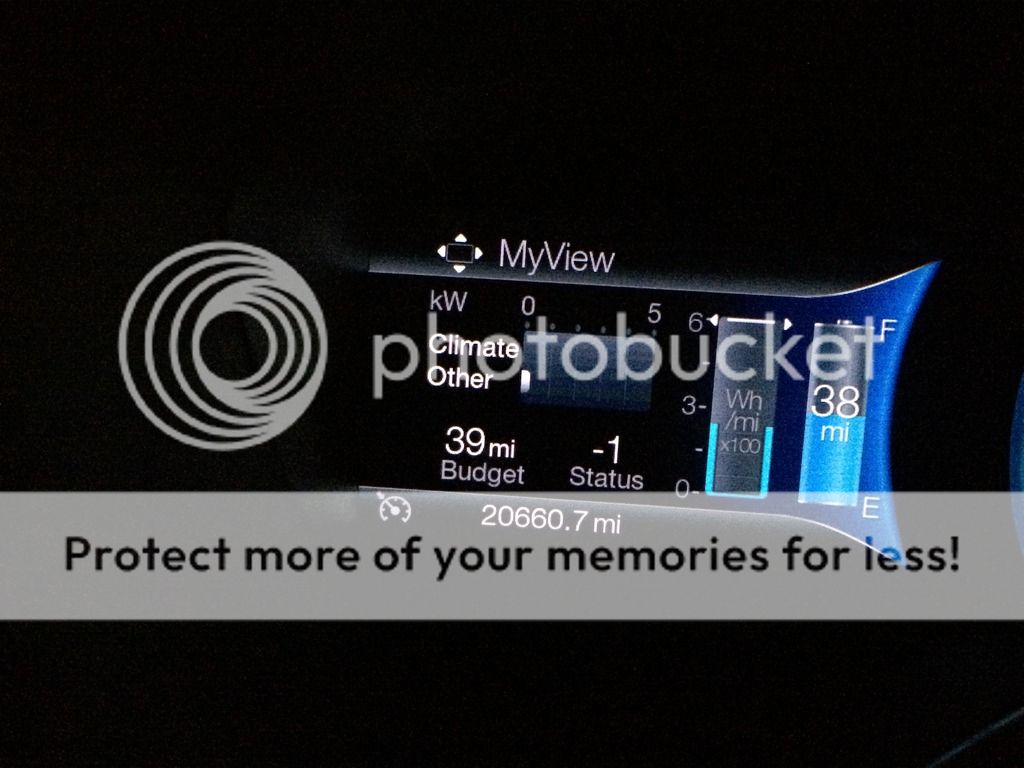The energy meter indicates your current energy usage, expressed as Wh (watt hours) per mile. Thus, what the gauge shows is necessarily based on your
current speed (keep this point in mind for later).
A watt hour is a unit of energy, explained here:
http://searchcio-midmarket.techtarget.com/definition/watt-hour
The range displayed by the energy meter in the FFE is goes from 0 Wh/mile x 100 (at the bottom) to 6 Wh/mile x 100 (at the top). In other words, it goes from 0 to 600 Wh/mile. The markings are just simplified for a clean look.
The reason the white line goes to the top when you stop is because the meter shows Wh
per mile -- in other words, as I already mentioned, the computation of the reading (in part) is based on your current speed. When you are stopped, your current speed is zero. If you recall from math class, anything / zero = infinity. Thus, the line "pegs" at the top when stopped.
Another way to think of it... when your car isn't moving and you
apply full energy get moving, ALL of the available power is being used to start moving the car (initially at an infinitely slow speed just above zero miles per hour, and then a little more, and a little more, etc.).
At that instant of starting to move, your energy usage per mile is at its "highest". As you get moving, it comes
down from infinity. And, as you do the opposite, slow down and finally stop again, it inversely goes back up to infinity.
Who says you don't need math in the real world.

Btw, if the average Wh/mile displayed in the trip meter is something like 250-300, you're doing pretty well, and will likely achieve the "76 miles per charge" range claimed by Ford. This average corresponds to roughly the middle (3 Wh/mile x 100) of the energy meter.







































